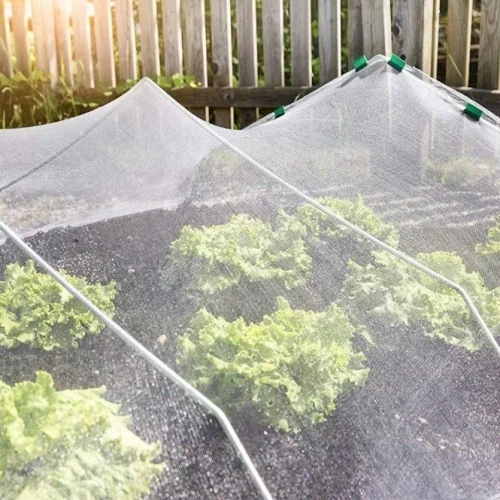-
 Afrikaans
Afrikaans -
 Albanian
Albanian -
 Amharic
Amharic -
 Arabic
Arabic -
 Armenian
Armenian -
 Azerbaijani
Azerbaijani -
 Basque
Basque -
 Belarusian
Belarusian -
 Bengali
Bengali -
 Bosnian
Bosnian -
 Bulgarian
Bulgarian -
 Catalan
Catalan -
 Cebuano
Cebuano -
 China
China -
 Corsican
Corsican -
 Croatian
Croatian -
 Czech
Czech -
 Danish
Danish -
 Dutch
Dutch -
 English
English -
 Esperanto
Esperanto -
 Estonian
Estonian -
 Finnish
Finnish -
 French
French -
 Frisian
Frisian -
 Galician
Galician -
 Georgian
Georgian -
 German
German -
 Greek
Greek -
 Gujarati
Gujarati -
 Haitian Creole
Haitian Creole -
 hausa
hausa -
 hawaiian
hawaiian -
 Hebrew
Hebrew -
 Hindi
Hindi -
 Miao
Miao -
 Hungarian
Hungarian -
 Icelandic
Icelandic -
 igbo
igbo -
 Indonesian
Indonesian -
 irish
irish -
 Italian
Italian -
 Japanese
Japanese -
 Javanese
Javanese -
 Kannada
Kannada -
 kazakh
kazakh -
 Khmer
Khmer -
 Rwandese
Rwandese -
 Korean
Korean -
 Kurdish
Kurdish -
 Kyrgyz
Kyrgyz -
 Lao
Lao -
 Latin
Latin -
 Latvian
Latvian -
 Lithuanian
Lithuanian -
 Luxembourgish
Luxembourgish -
 Macedonian
Macedonian -
 Malgashi
Malgashi -
 Malay
Malay -
 Malayalam
Malayalam -
 Maltese
Maltese -
 Maori
Maori -
 Marathi
Marathi -
 Mongolian
Mongolian -
 Myanmar
Myanmar -
 Nepali
Nepali -
 Norwegian
Norwegian -
 Norwegian
Norwegian -
 Occitan
Occitan -
 Pashto
Pashto -
 Persian
Persian -
 Polish
Polish -
 Portuguese
Portuguese -
 Punjabi
Punjabi -
 Romanian
Romanian -
 Russian
Russian -
 Samoan
Samoan -
 Scottish Gaelic
Scottish Gaelic -
 Serbian
Serbian -
 Sesotho
Sesotho -
 Shona
Shona -
 Sindhi
Sindhi -
 Sinhala
Sinhala -
 Slovak
Slovak -
 Slovenian
Slovenian -
 Somali
Somali -
 Spanish
Spanish -
 Sundanese
Sundanese -
 Swahili
Swahili -
 Swedish
Swedish -
 Tagalog
Tagalog -
 Tajik
Tajik -
 Tamil
Tamil -
 Tatar
Tatar -
 Telugu
Telugu -
 Thai
Thai -
 Turkish
Turkish -
 Turkmen
Turkmen -
 Ukrainian
Ukrainian -
 Urdu
Urdu -
 Uighur
Uighur -
 Uzbek
Uzbek -
 Vietnamese
Vietnamese -
 Welsh
Welsh -
 Bantu
Bantu -
 Yiddish
Yiddish -
 Yoruba
Yoruba -
 Zulu
Zulu
agricultural mesh
The Importance of Agricultural Mesh in Modern Farming
Agricultural mesh has emerged as a pivotal innovation in the realm of modern farming, providing a range of benefits that enhance crop yield and sustainability. This versatile tool, often made from high-density polyethylene or polypropylene, is employed in various agricultural applications, including crop protection, shade provision, and pest management.
One of the primary uses of agricultural mesh is to provide protection against adverse weather conditions. Farmers are increasingly facing challenges posed by extreme weather events, including heavy rainfall, hail, and intense sunlight. Agricultural mesh serves as a protective barrier that shields crops from potential damage. For instance, hail nets can reduce the impact of hailstones, while shading nets help moderate temperature fluctuations and reduce the risk of sunburn on sensitive plants. By safeguarding crops in this manner, agricultural mesh can significantly contribute to higher yields and better quality produce.
In addition to weather protection, agricultural mesh is a highly effective solution for pest management. Many farmers struggle with pest infestations that can ravage crops and reduce harvests. By using mesh as a physical barrier, farmers can effectively prevent insects and birds from accessing their plants while allowing sunlight, air, and water to reach the crops. This integrated pest management approach minimizes the need for chemical pesticides, promoting a more sustainable and environmentally friendly farming practice.
agricultural mesh

Moreover, agricultural mesh fosters better growth conditions for crops
. The use of specific types of mesh, such as netting designed for trellising or support, allows for enhanced air circulation and sunlight penetration. This is especially beneficial for climbing plants, which can benefit from a supportive structure while ensuring they remain healthy and productive. Furthermore, shade nets can be strategically used to create microclimates that protect sensitive crops during hot months, optimizing growth conditions year-round.Another significant advantage of agricultural mesh is its durability. Designed to withstand varying weather conditions, mesh products are often UV stabilized and resistant to rotting and degradation. This long longevity ultimately translates to cost savings for farmers, as they can invest in durable materials that require less frequent replacement. Furthermore, the lightweight nature of agricultural mesh makes it easy to install and manage, enabling farmers to make necessary adjustments without intensive labor.
Despite its numerous benefits, it is essential for farmers to choose the appropriate type of agricultural mesh based on their specific needs. Factors such as mesh size, material, and its intended purpose play crucial roles in determining its effectiveness. Therefore, conducting thorough research and consulting with experts can help ensure that farmers make informed decisions.
In conclusion, agricultural mesh represents a significant advancement in farming practices, offering solutions for weather protection, pest management, and optimal plant growth. Its durability and multifunctionality make it an indispensable tool in the pursuit of sustainable agriculture. As the demand for food continues to grow alongside climate challenges, the importance of agricultural mesh in contributing to more resilient farming systems cannot be overstated. By embracing this technology, farmers are not only enhancing their productivity but also ensuring a more sustainable agricultural future.
-
Shipping Plastic Bags for Every NeedNewsJul.24,2025
-
Safety Netting: Your Shield in ConstructionNewsJul.24,2025
-
Plastic Mesh Netting for Everyday UseNewsJul.24,2025
-
Nylon Netting for Every UseNewsJul.24,2025
-
Mesh Breeder Box for Fish TanksNewsJul.24,2025
-
Expanded Steel Mesh Offers Durable VersatilityNewsJul.24,2025











